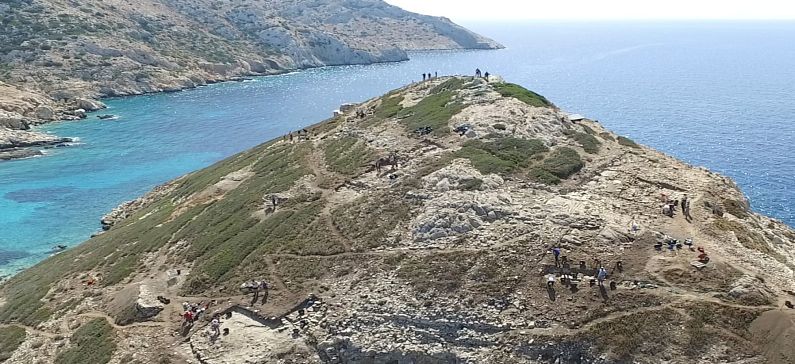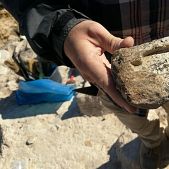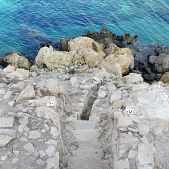
Cambridge University: Complex engineering and metal-work discovered in Keros
New excavations on the remote island of Keros reveal monumental architecture and technological sophistication at the dawn of the Cycladic Bronze Age.
New work at the settlement of Dhaskalio, the site adjoining the prehistoric sanctuary on the Cycladic island of Keros, has shown this to be a more imposing and densely occupied series of structures than had previously been realised, and one of the most impressive sites of the Aegean during the Early Bronze Age (3rd millennium BC).
Until recently, the island of Keros, located in the Cyclades, south of Naxos, was known for ritual activities dating from 4,500 years ago involving broken marble figurines. Now new excavations are showing that the promontory of Dhaskalio (now a tiny islet because of sea level rise), at the west end of the island next to the sanctuary, was almost entirely covered by remarkable monumental constructions built using stone brought painstakingly from Naxos, some 10km distant.
Professor Colin Renfrew of the University of Cambridge, Co-Director of the excavation, suggested that the promontory, with its narrow causeway to the main island, “may have become a focus because it formed the best natural harbour on Keros, and had an excellent view of the north, south and west Aegean”.
The promontory was naturally shaped like a pyramid, and the skilled builders of Dhaskalio enhanced this shape by creating a series of massive terrace walls which made it look more like a stepped pyramid. On the flat surfaces formed by the terraces, the builders used stone imported from Naxos to construct impressive, gleaming structures.
The research team, led by archaeologists from the University of Cambridge, the Ephorate of the Cyclades and the Cyprus Institute, have calculated that more than 1000 tons of stone were imported, and that almost every possible space on the island was built on, giving the impression of a single large monument jutting out of the sea. The complex is the largest known in the Cyclades at the time.
Renfrew noted that “investigations at multiple points throughout the site have given unique insight into how the architecture was organised and how people moved about the built environment”.
While excavating an impressive staircase in the lower terraces, archaeologists began to see the technical sophistication of this civilisation 1000 years before the famous palaces of the Mycenaeans. Underneath the stairs and within the walls they discovered sophisticated systems of drainage, signalling that the architecture was multipurpose and carefully planned in advance. Tests are now underway to discover whether the drains were for managing clean water or sewage.










